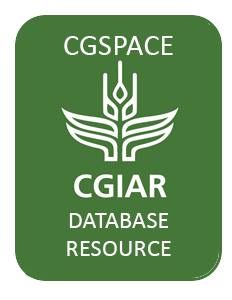Mission
To reduce hunger and poverty, and improve human nutrition in the tropics through research aimed at increasing the eco-efficiency of agriculture.
People
CIAT’s staff includes about 200 scientists. Supported by a wide array of donors, the Center collaborates with hundreds of partners to conduct high-quality research and translate the results into development impact. A Board of Trustees provides oversight of CIAT’s research and financial management.
Values
- Shared organizational ethic
- We respect each other, our partners, and the people who benefit from our work. We act with honesty, integrity, transparency, and environmental responsibility in all of our joint endeavors.
- Learning through partnerships
- We work efficiently and pragmatically together and with partners. Considering our diversity to be a key asset, we adapt readily to change and strive to improve our performance through continuous learning.
- Innovation for impact
- We develop innovative solutions to important challenges in tropical agriculture, resulting in major benefits for the people who support, participate in, and profit from our work.
Members:
Resources
Displaying 891 - 895 of 958Land resource evaluation of tropical America
En 1977 se inicio la evaluacion de los recursos de tierra para estudiar las regiones de Oxisoles y Ultisoles en America del Sur, con el objeto de ayudar a establecer prioridades tecnicas para el mejoramiento de la tierra. Esta parte del trabajo se completo en 1979, pero el estudio ha sido ampliado para proporcionar informacion sobre otros cultivos de la region Andina, y sobre la produccion de cultivos, agroforestal y de forrajes en America Latina.
Pasture development in the thermic savannas (Cerrado)
Se identificaron deficiencias nutricionales (principalmente de P y algo de K, Mg, Zn y Mo) en Calopogonium mucumoides. Se aplico 0- 240 kg de P205 como superfosfato triple, roca fosforica Araxa o termofosfato/ha, en Andropogon gayanus y stylosanthes capitata al momento de la siembra. El establecimiento delas 2 esoecies fue bueno, pero el crecimiento de S. capitata fue tan lento que cuando se corto la pradera de 15 cm, consistia casi de graminea pura.
Cooperación internacional
The progress achieved by CIAT's cassava program through training activities related to the crop in Latin America, Asia, and Oceania are given. In collaboration with the training office at the Centro Internacional de Agricultura Tropical, the cassava program in 1980 trained 38 professionals from 15 countries (Brazil, Colombia, Mexico, Bolivia, USA, Thailand, Dominican Republic, S. Africa, Ecuador, Haiti, Honduras, W. Germany, the Netherlands, Great Britain, and Italy).
International cooperation
The progress achieved by CIAT's cassava program through training activities related to the crop in Latin America, Asia, and Oceania are given. In collaboration with the training office at the Centro Internacional de Agricultura Tropical, the cassava program in 1980 trained 38 professionals from 15 countries (Brazil, Colombia, Mexico, Bolivia, USA, Thailand, Dominican Republic, S. Africa, Ecuador, Haiti, Honduras, W. Germany, the Netherlands, Great Britain, and Italy).
Desordenes nutricionales
Different nutritional deficiencies or toxicities may limit bean development and yield. N and P deficiencies are the most frequent, although deficiency of minor elements and Al/Mn toxicity can reduce yields considerably. Nutritional problems are usually diagnosed by soil and plant tissue analyses and the observation of symptoms produced by nutritional disorders. Optimum pH for bean production varies between 6.5-7.5; within these limits, the majority of the plant nutrients have their max availability. Color illustrations are given of the symptoms of plant deficiencies and toxicities.


